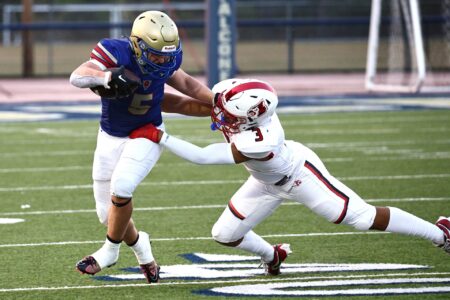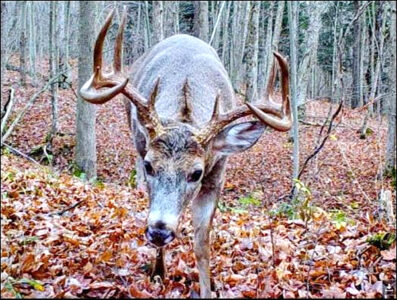The science of a Lake Erie worm harness
- Photo courtesy of Forrest Fisher To learn more about how to tie a worm harness or to purchase parts to make your own, visit Gerri Begier at Bill’s Hooks Tackle Shop on Route 5 just south of Dunkirk.
- Photo courtesy of Eye-Fish Lures The willow leaf spinner blade is effective for fast trolling in clear water where flash is more important than vibration.
- Photo courtesy of Captain Jim Klein Colorado spinner blades are used for slow trolling and work well in stained or dirty water, or in conditions where vibration is more important than flash.

Photo courtesy of Forrest Fisher To learn more about how to tie a worm harness or to purchase parts to make your own, visit Gerri Begier at Bill’s Hooks Tackle Shop on Route 5 just south of Dunkirk.
Many of us Lake Erie walleye anglers have grown up with friends where the only lure to use for walleye fishing was a worm harness rigged with a live nightcrawler.
Walleye fishing on Eastern Lake Erie with a crawler harness is a tried-and-true method, especially effective all summer long. To rig it properly, there are balance, bead and blade color considerations, and at least three differences in blade shapes. Each of these variables matter.
A typical crawler harness consists of a spinner blade (Colorado, Indiana or Willow), a series of beads and one or two hooks (single) tied on a monofilament, stainless steel or wire leader.
The blade shape matters because it affects vibration, flash and the speed at which you can troll effectively.
The Colorado blade is round, used for very slow trolling (1-1.5 mph), has a slow, wide wobble with a strong vibration and works well in murky water.

Photo courtesy of Eye-Fish Lures The willow leaf spinner blade is effective for fast trolling in clear water where flash is more important than vibration.
The Indiana blade, a versatile teardrop shape with moderate wobble and flash, is a good all-around blade.
The Willow blade is a long, narrow blade made for fast trolling in clear water that provides lots of flash and works best when flash is more important than vibration.
Once the blade choice is made, the worm must be rigged just right. Use a whole nightcrawler and carefully thread the very head of the worm onto the first hook near the beads, then lightly hook the second hook about halfway down the body. Let the tail hang free; don’t thread it all the way up or it won’t have natural action. Keep it straight — a twisted or overly curved crawler can spin unnaturally, reducing hits.
Of course, the harness can now be rigged on a diving plane, a downrigger, an in-line weight or with a bottom bouncer wire or sinker. Depending on how you are rigged with a weight, troll around contour lines, reefs, or suspended schools over deeper water. Vary your speed and direction slightly as walleye often hit during speed changes or turns. For example, you can speed up and slow down your trolling speed, or make slight turns to the left or right. These variations can often trigger a strike from a walleye.
Bead colors matter, too, depending on light conditions, water clarity and forage.

Photo courtesy of Captain Jim Klein Colorado spinner blades are used for slow trolling and work well in stained or dirty water, or in conditions where vibration is more important than flash.
Chartreuse/green is excellent for stained water or low light and mimics emerald shiners and young-of-the-year yellow perch. Purple/dark red is excellent for clear water and sunny days, as walleyes see purple well in the deepest water. Orange/firetiger is bright and functional in slightly stained or dirty water.
Glow beads are great for dawn, dusk or deeper water where light is minimal. Metallic beads reflect light and act as mini-flashers during high sunshine. When we mix and match colors and blade types, the most effective favorites are found. That’s what friends are for. Spread the word and have fun out there. There are lots of walleye to catch this year.
Lastly, don’t forget to check the GLOS Seagull, Great Lakes Observation System Buoy off Dunkirk. This buoy provides crucial information such as water temperature, wind direction, wave height and more. It’s a valuable tool for anglers, especially when the thermocline forms or the lake turns over. By checking this buoy, you can know exactly where to fish and at what depth, helping to make your fishing trip a successful trip.Visit https://seagull.glos.org and check it out.
Gotta love the outdoors.
CALENDAR
June 21: Kids Fishing Day, Westfield Fish and Game, 8150 Ogden Road, Westfield. A fun-filled day for kids to learn about fishing and enjoy the outdoors.
June 21-22: New York musky, Chautauqua Lake Showdown, Launch site TBD, Region 3 Chapter Challenge; 585-287-7578.
June 25: Chautauqua County Federation of Sportsmen, monthly meeting, Conservation Building, Chautauqua Fairgrounds, 7 p.m. start.
June 26: Erie County Federation of Sportsmen, Monthly Meeting, 7 p.m., Hamburg Rod & Gun, 3434 Hickox Road, Hamburg, Info: 716-648-2236.
June 27: WNY Heroes Day (Dunkirk), Contact Jim Steel; 716-481-5348; visit https://wnyheroes.org/.



